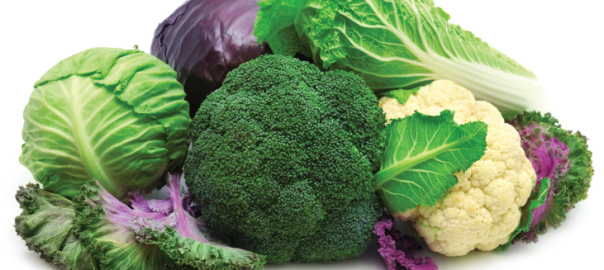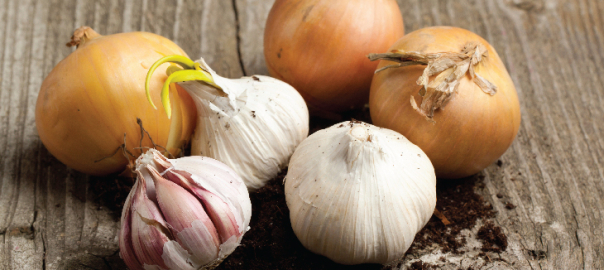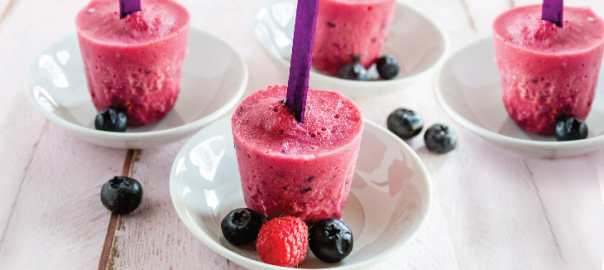The onset of autumn and cooler weather provides a great opportunity for all of us to indulge our palates in the wide variety of cruciferous vegetables, which aren’t typically cultivated in abundance through the summer. These superfoods deliver a range of healthy nutrients from basic vitamins and minerals to very sophisticated phytonutrients well recognized for their role in cancer prevention. In spite of their pungent odor and bitter taste, their health-promoting potential makes the cruciferous vegetables compelling to consume. Let’s explore these unusual puppies.
These cruciferous vegetables are part of the Brassica genus of plants and include
|
|
|---|
Nutrients
Cruciferous vegetables are rich sources of a range of nutrients such as: vitamins C, E folate (B9), and K; minerals such as potassium; fiber; and phytonutrients. Among the most well identified phytonutrients in the cruciferous vegetables are beta-carotene, lutein, zeaxanthin and a unique group known as glucosinolates. In fact, it is the sulfur-containing glucosinolates that provide the pungent odor and bitter flavor familiar to the cruciferous vegetables.
Hydrolysis
Through the processes of food preparation, chewing, and digestion of the cruciferous vegetables, glucosinolates are broken down by a chemical reaction called hydrolysis — the addition of water to break down — to form biologically active compounds identified as indoles, nitriles, thiocyanates and isothiocyanates. Indole-3-carbinol (an indole) and sulforaphane (a glucosinolate) have most frequently been studied for their role in cancer prevention in several organs, including bladder, breast, colon, liver, lung, and stomach. Research has included animal studies, epidemiological studies (population based studies), and human clinical trials.
Cancer Fighting Properties
Sulforaphane glucosinalate and Indole-3-Carbinol have demonstrated their potential to inhibit the development of cancer through several biological mechanisms including:
Protecting cellular DNA from damage
Providing antioxidant potential
Inactivating carcinogens, through the process of detoxification
Inducing programmed cell death (apoptosis)
Inhibiting the process of tumor blood vessel formation (angiogenesis)
Inhibiting cancer cell migration (a process required for metastasis)
Exhibiting antiviral and antibacterial effects
Activate the anti-inflammatory cascade
Research has noted that although each compound exhibits its own cancer-preventing potential, they also work synergistically. In addition to the anti-cancer potential, the cruciferous vegetables also provide digestive and cardiovascular support.
Suggested Intake
Cruciferous vegetables should either be consumed raw or chopped and slightly steamed to retain their phytonutrients; however, preparing cruciferous vegetables in novel ways allows us to use these vegetables for any occasion.
Consume at least 3 cups per day in order to achieve cancer-prevention potential. Given the different benefits if each, choose a variety to add to your diet.
Tips for Adding Cruciferous Vegetables to Your Daily Diet
Blanch or steam cauliflower and broccoli, and eat with other raw vegetables as an afternoon snack.
Steam cauliflower, broccoli, and Brussels sprouts, and add to your salad.
Add chopped cruciferous vegetables to soups, stews, casseroles, or stir fries.
Replace lettuce with chopped kale in your salad.
Prepare healthy coleslaw with shredded mixed cabbage and carrot. Dress with organic, cold-pressed olive oil, organic rice vinegar, mustard, and honey. Season to taste.
Add cruciferous vegetables to a frittata or omelet, and eat for breakfast or lunch.
Substitute cauliflower for a grain to prepare your next pizza.
Cauliflower Pizza Crust
Ingredients
1 Large head of cauliflower, about 7”-8” in diameter
Process
Remove the outer leaves and separate the florets.
Rinse the florets and place wet florets in the bowl of a food processor.
Pulse the cauliflower till it reaches a rice-like texture.
Place the cauliflower “rice” in a glass bowl and microwave for 8 minutes, or place the cauliflower in a baking sheet lined with parchment paper and roast in the oven at 450° F for 15 minutes.
Transfer the cooked cauliflower “rice” to a bowl lined with cheesecloth.
Grab the 4 corners and squeeze out as much liquid as you can, until the cauliflower is dry and looks mashed.
At this point, you can combine the cauliflower with other ingredients such as 1 egg, fresh or dried herbs, and grated cheese.
Flatten the cauliflower mash or mixed cauliflower dough into a pizza baking pan or on a baking sheet lined with parchment paper.
Bake for 15-20 minutes, and remove from the oven.
Top with your favorite pizza toppings and bake again until the cheese turns golden brown.
(Original post on boomspot)




